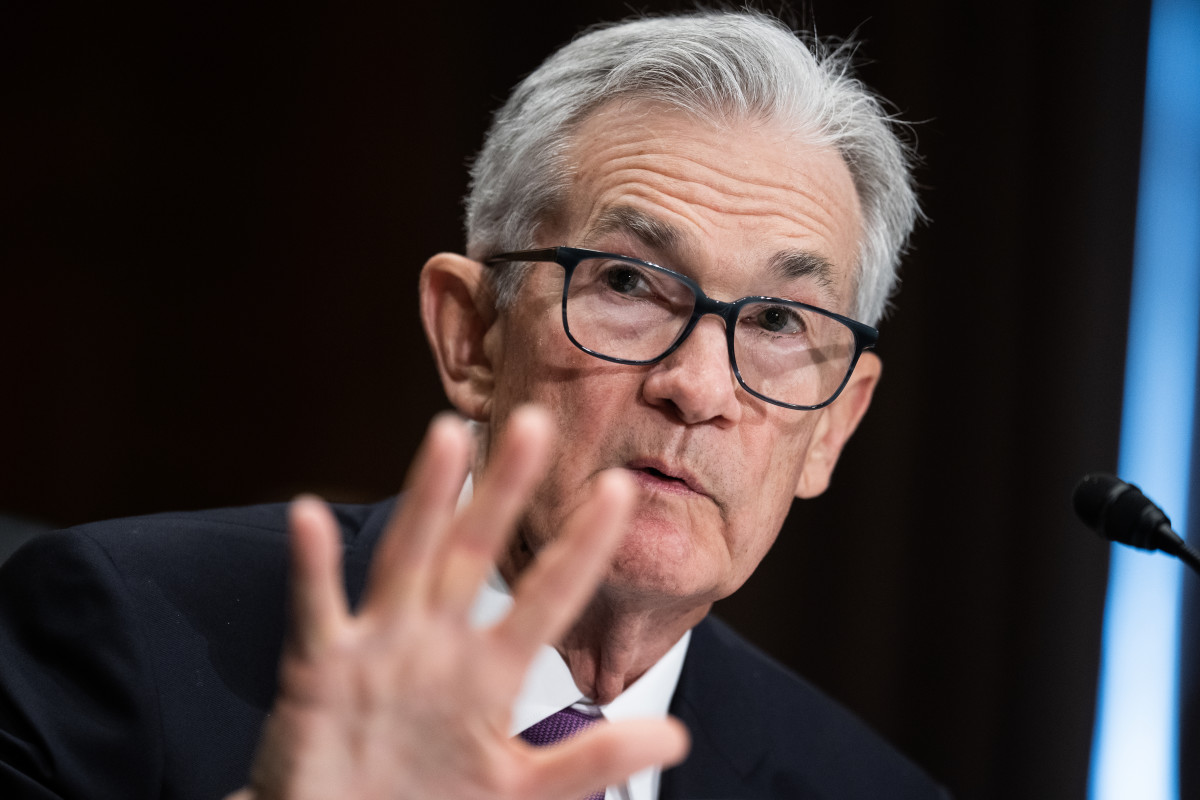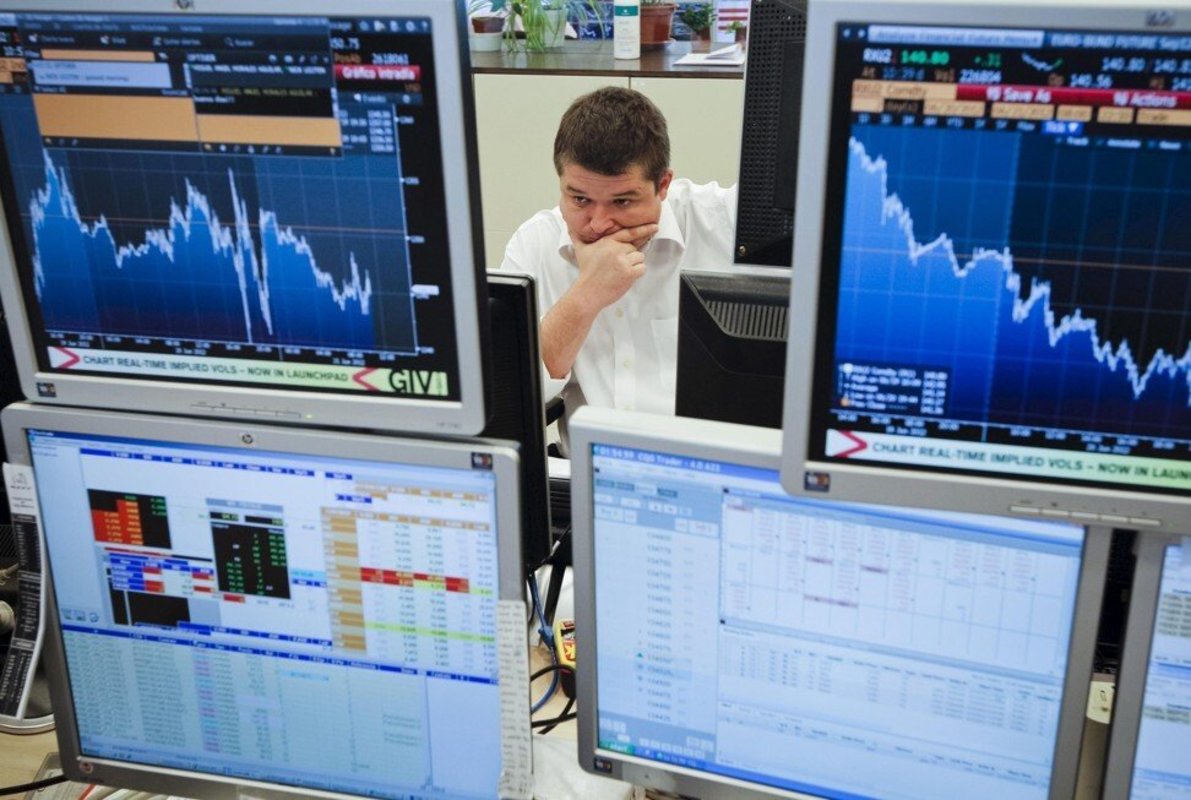
Global stocks turned lower this week as investors hit pause on an impressive spring rally amid new warning signals from the bond market that suggest inflation pressure could remain elevated well into the summer months.
The S&P 500 has printed no fewer than 24 record highs this year, and has powered to a five-month gain of around 11.25%, on the strength of improving corporate earnings, a resilient economy and outsized gains in the tech sector tied to the surge in artificial-intelligence investments.
On the fixed-income side, however, things have been notably dour, with global government bond portfolios down 4.9% for the year, according to data from Bank of America's 'Flow Show' report.
Bond investors are typically the most acutely sensitive to inflation risks, given the nature of fixed income pricing and the arithmetic that defines most of the market's related products.
Inflation is often called 'the enemy of bonds' as it erodes the present value of future income income streams.
And headline inflation, while slowing, is still at levels that require investors to discount what they pay for a bond, pushing prices lower and yields higher.
That generally means bond markets will react earlier, and with more urgency, to renewed inflation risks than their equity-market brethren, who find value in stocks beyond the mathematics of interest rates.

Two major Treasury bond auctions this week provided evidence for that theory, as investors retreated from the safest fixed income investments in the world even as stocks continued to test all-time highs.
Weak bond auctions
The Treasury's $69 billion sale of 2-year notes, held just hours ahead of a $70 billion sale of 5-year paper, drew muted interest from both foreign and domestic investors and left Wall Street banks holding a larger-than-expected portion of the overall auction to cushion the blow.
In the 2-year sale, a benchmark auction that often sets the broader market tone, investors placed more than $166 billion of bids for the $69 billion of notes put up for auction. The auction thus generated a so-called bid-to-cover ratio, a key indicator of demand, of 2.41.
Related: The bond market is freaking out about inflation. It could be very wrong.
That was down sharply, however, from the 2.66 level in last month's sale. Indirect bidders, which are comprised largely of foreign central banks, took down 57.9% of the sale, a big decline from the 66.2% rate recorded in April.
For the $70 billion 5-year auction, the bid-to-cover ratio was pegged at just 2.39, the lowest since September 2022.
The weak auction demand pushed market yields firmly higher into the close of the Tuesday session and again in overnight trading, with benchmark 10-year notes rising to a one-month high of 4.576% and 2-year paper pegged at 4.965%.
The Treasury will auction $44 billion in new 7-year notes later on May 29.
🇺🇸Pros and Cons of Today’s 7-Year UST Note Sale
— Althea Spinozzi (@Altheaspinozzi) May 29, 2024
Good to Note:
✅ Auction size is notably smaller than yesterday's 2- and 5-year sales.
✅ 7-year yields are up 15bps from Friday’s close, potentially pricing at the highest auction yield on record. pic.twitter.com/C8uvIwI7Fv
The weak reception might have been tied to the massive amounts of new supply hitting the markets this week, with more than $600 billion in coupon bonds, T-bills and floating-rate notes up for sale.
Creeping inflation risks
And while no major inflation headlines have grabbed the market's attention over the past two weeks, a creeping sense that the broader resilience of the U.S. economy is going to keep price pressures elevated, and delay any Federal Reserve interest rate cuts, is starting to take hold.
The Atlanta Fed's GDPNow forecasting tool suggests a current-quarter growth rate of 3.5%, more than double the Commerce Department's estimate for the first three months of the year. And the job market remains historically tight, with headline unemployment running below 4% for more than two years.
The Conference Board's benchmark index of consumer confidence jumped 4.5 points to 102 in May, well north of Wall Street forecasts, even as respondents said food and grocery inflation were having the biggest impact on the broader economy.
Related: Analyst updates S&P 500 price target after CPI inflation surprise
The survey also indicated that the percentage of people expecting interest rates to rise over the coming year jumped to 56.2% from 55.2% in April.
Minneapolis Fed President Neel Kashkari, meanwhile, repeated his warning that he needed "many more months of positive inflation data" before he could justify arguing for a rate cut. He adding in an interview with CNBC Europe that the central bank could even lift rates higher if inflation doesn't slow.
PCE data, Fed's favorite benchmark, in focus
Others, however, suggest evidence of that slowdown is likely to begin later this week when the Bureau of Economic Analysis publishes its closely-tracked PCE Price index.
Often called the Fed's preferred inflation gauge, the PCE index is designed to smooth out short-term changes in spending habits and provide a more statistically rigid picture of consumer-price pressures.
Economists expect the core April reading, which arrives on May 31, to ease modestly, to 0.2% from 0.3% in March, with the year-on-year level slipping to 2.7%.
BlackRock 's Jean Bolvin, who heads the group's Investment Institute, sees it differently.
Related: Goldman Sachs shifts interest-rate outlook ahead of key inflation report
"We monitor the data for any signs that services inflation is easing," Bolvin said. "CPI data for April showed core goods prices falling further, so recent upside surprises on the PCE measure may be one-offs.
"Yet services inflation is proving volatile and remains well above a pace consistent with inflation settling at the Fed’s 2% target in the medium term," he added.
Rate traders seem to agree, at least according to data from the CME Group's FedWatch tool, which suggests only a 45.8% chance of a September rate hike – down from as high as 72% in early April – following no changes in policy at the Fed's June or July policy meetings.
More Economic Analysis:
- Housing has a problem bigger than interest rates
- Analyst updates S&P 500 price target after CPI inflation surprise
- CPI inflation report resets timing of Fed interest rate cuts
Whether that "higher for longer" rates theme starts to have a meaningful impact on stocks heading into the summer months remains to be seen.
The first quarter earnings season was excellent," said Jeffery Buchbinder, chief equity strategist at LPL Financial. "Corporate America delivered when it needed to; earnings growth rates were stronger than anticipated, and upbeat guidance caused analysts to increase estimates.
"If companies can deliver near-consensus earnings estimates in 2024, buoyed by big tech, and inflation resumes its downward trajectory, enabling a soft landing, then we believe stocks stand a good chance of adding to year-to-date gains through year-end," he added.
Related: Veteran fund manager picks favorite stocks for 2024







